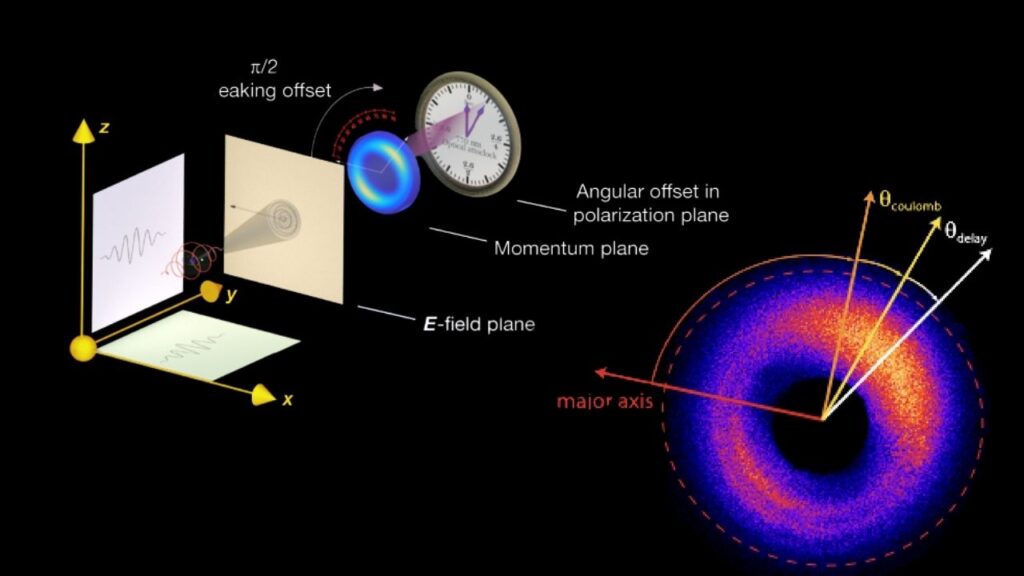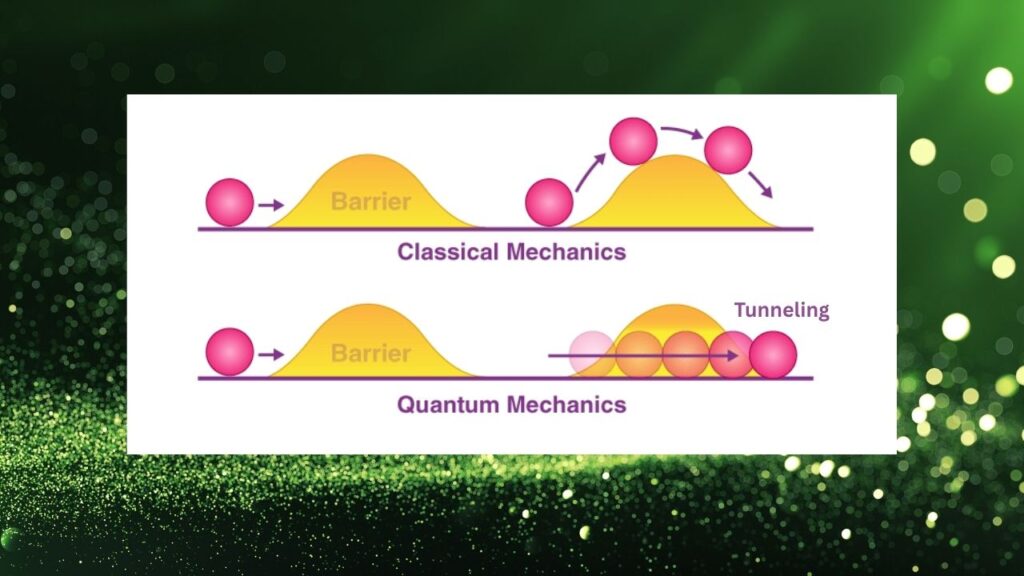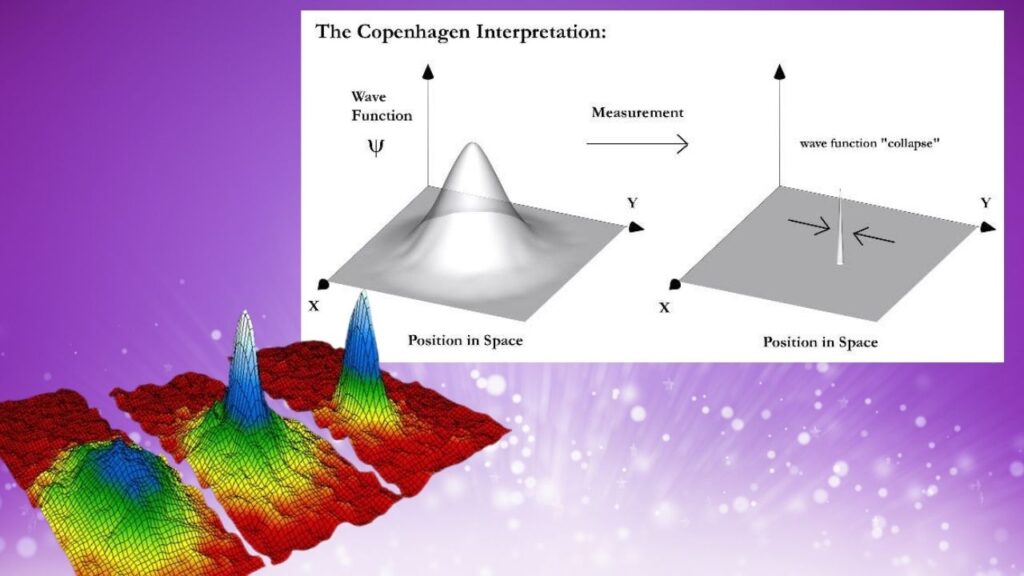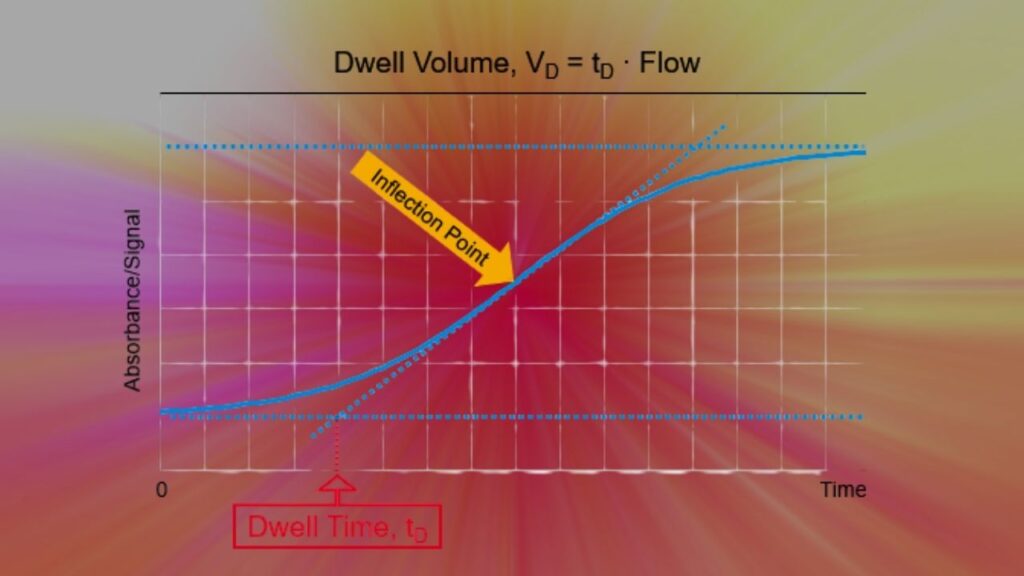Attosecond ‘Clock’ Measures Electron Tunneling Time With Unmatched Precision: Electron tunneling is one of the most intriguing and fundamental phenomena in quantum mechanics. It refers to the quantum behavior where electrons pass through potential energy barriers they classically shouldn’t be able to cross. Understanding exactly how long this tunneling process takes has puzzled scientists for decades because it occurs at timescales unimaginably fast—on the order of attoseconds (10⁻¹⁸ seconds). Recent breakthroughs using an innovative tool called the attosecond ‘clock’ have allowed researchers to measure electron tunneling time with unmatched precision, yielding results that suggest tunneling happens essentially instantaneously.

This article offers a detailed exploration of this discovery. It breaks down complex ideas into clear concepts and practical examples, making it approachable for curious learners while providing deep insights useful to professionals in physics and related fields. We will also discuss the experimental techniques, the significance of the findings, and the future directions this breakthrough points toward.
Attosecond ‘Clock’ Measures Electron Tunneling Time With Unmatched Precision
| Topic | Details |
|---|---|
| Phenomenon Measured | Electron tunneling time |
| Measurement Technique | Attosecond ‘attoclock’ using ultrafast laser pulses |
| Time Scale | Attoseconds (10⁻¹⁸ seconds) |
| Result | Electron tunneling time approaches zero within experimental error |
| Applications | Quantum computing, ultrafast electronics, scanning tunneling microscopy |
| Lead Research Sources | Phys.org Attoclock Research |
| Career Fields Impacted | Quantum physics, photonics, nanotechnology, semiconductor engineering |
| Recommended Skills | Quantum mechanics, ultrafast laser technology, experimental physics |
The use of the attosecond ‘clock’ to measure electron tunneling time with unprecedented precision is a landmark achievement in quantum physics. By demonstrating that tunneling occurs on a timescale indistinguishable from zero, this research clarifies fundamental aspects of quantum mechanics and opens promising avenues in quantum technology, ultrafast electronics, and precision spectroscopy.
This breakthrough is a shining example of how advances in laser technology and quantum theory come together to illuminate the fastest processes in nature. For both students and professionals, the attosecond clock represents not only a measurement tool but also a beacon guiding future exploration into the ultrafast quantum realm.
Understanding Electron Tunneling: The Quantum Leap

Electron tunneling occurs when an electron crosses a potential barrier even if it does not have enough classical energy to do so. In classical physics, a particle must have energy equal to or greater than the height of a barrier to pass over it. Imagine trying to roll a ball over a hill that’s too high—classically, it’s impossible without extra energy.
However, quantum mechanics introduces wave-particle duality. Electrons exhibit both particle and wave properties, and this wave nature allows the electron’s probability amplitude to extend through and beyond barriers. This phenomenon enables electrons to “tunnel” through barriers, appearing on the other side despite not having enough energy to surmount them traditionally.
This behavior is central to many modern technologies, such as:
- Scanning Tunneling Microscopes (STM): Instruments that use tunneling current to image surfaces at atomic scales.
- Semiconductor Devices: Tunnel diodes and flash memory rely on electron tunneling for their operation.
- Quantum Computing: Qubit control often exploits tunneling effects to manipulate quantum states.
The Challenge of Measuring Tunneling Time
Though the existence of tunneling is well-established, its timing remained elusive for years. The central question is: How long does it take for an electron to tunnel through a barrier?
Measuring such an event is extraordinarily difficult because:
- The time scale is extremely short—on the order of attoseconds (1 attosecond = 10⁻¹⁸ seconds).
- Direct observation tools capable of resolving such fleeting moments did not exist until recent advances in laser technology.
- The concept of “time” in quantum tunneling is itself subtle and debated, with competing theoretical interpretations.
Early theoretical models suggested tunneling might take finite time, but some interpretations implied it might be instantaneous. Experimental verification has been challenging due to limitations in temporal resolution.
The Attosecond ‘Clock’: How It Works
The breakthrough came with the development of the attosecond ‘clock’, a technique that leverages ultrafast laser pulses to measure electron tunneling time with unprecedented precision. Let’s break down the process:
Step 1: Generating Ultrashort Laser Pulses
Using state-of-the-art laser systems, researchers produce pulses lasting just a few attoseconds. These pulses are circularly polarized, meaning the electric field vector rotates like the hand of a clock.
Step 2: Ionizing the Atom
The attosecond laser pulse interacts with an atom, typically a noble gas like helium or argon. The electric field lowers the potential barrier enough for the electron to tunnel through, escaping the atom.
Step 3: Tracking Electron Emission Angle
The rotation of the laser’s electric field means the instant the electron tunnels determines the direction (angle) at which it is emitted. Measuring the electron’s final emission angle allows researchers to use this as a timing mark—hence the term “attoclock.”
Step 4: Data Collection and Analysis
Sensitive detectors capture the momentum and angle of emitted electrons. By analyzing these distributions and correlating them with the laser field’s rotation, researchers infer the tunneling delay.
Key Finding:
In recent experiments, this delay has been found to be effectively zero within experimental uncertainty. The electron appears to tunnel instantaneously.
The Science Behind the Zero Tunneling Time Result
The implication that electron tunneling takes effectively no measurable time challenges some classical intuitions about how particles move through barriers. Several theoretical frameworks contribute to understanding this:
- Quantum Wavefunction Collapse: The electron’s wavefunction extends through the barrier, and tunneling is a probabilistic event without a classical trajectory or time.

- Phase Time and Dwell Time: These theoretical constructs define different ways to measure “time” spent in the barrier region; experiments now provide data to validate these models.

- Relativistic Considerations: Some researchers have explored whether relativistic quantum mechanics impacts tunneling time, but current results affirm the near-instantaneous process even accounting for these factors.
These results solidify that time in quantum tunneling is fundamentally different from classical time, and the electron does not “linger” inside the barrier.
Broader Implications for Science and Technology
Quantum Computing and Ultrafast Electronics
Quantum devices rely heavily on electron tunneling for information processing. Understanding that tunneling happens instantaneously means:
- Qubit operations can be timed with greater precision.
- Electronic switches can operate closer to fundamental speed limits.
- Designs for quantum circuits can better account for timing constraints.
Fundamental Physics Research
Confirming zero tunneling delay resolves long-standing debates in quantum theory, enabling physicists to refine models of:
- Quantum dynamics in strong fields
- Attosecond spectroscopy and electron correlation studies
- Non-classical light-matter interactions
Ultrafast Measurement Techniques
The attoclock methodology itself is a powerful new tool. It is enabling experiments that probe electron dynamics with attosecond resolution, relevant for:
- Chemical reaction dynamics at atomic scales
- Development of new materials with tailored electronic properties
- Study of nanoscale devices and plasmonic effects
Practical Advice for Aspiring Researchers and Industry Professionals
If you want to engage with this exciting field of attosecond science, consider the following roadmap:
1. Master the Fundamentals of Quantum Mechanics
A deep understanding of wavefunctions, potential barriers, and tunneling is essential. Foundational textbooks like “Principles of Quantum Mechanics” by R. Shankar or “Quantum Mechanics” by Cohen-Tannoudji are highly recommended.
2. Gain Expertise in Ultrafast Laser Technology
Learn how to generate and manipulate femtosecond and attosecond laser pulses. Knowledge of pulse shaping, polarization control, and detection methods is crucial.
3. Develop Experimental Physics Skills
Hands-on experience with vacuum systems, electron spectroscopy, and photonics labs will build the skills needed to work on attosecond measurements.
4. Follow Key Journals and Conferences
Stay updated with journals such as Physical Review Letters, Nature Physics, and conferences like CLEO (Conference on Lasers and Electro-Optics).
5. Explore Interdisciplinary Collaboration
Attosecond science intersects with chemistry, materials science, and engineering—engage in cross-disciplinary projects to broaden impact.
Study Measures Thermodynamic Properties of Quark-Gluon Plasma With New Precision
New Geopolymer Tech Transforms Glass and Waste Into Ultra-Durable Green Building Material
AI-Driven Models Accelerate Molecular and Materials Discovery in Biomedical Research
FAQs About Attosecond ‘Clock’ Measures Electron Tunneling Time With Unmatched Precision
What Exactly Is an Attosecond?
An attosecond is one billionth of a billionth of a second (10⁻¹⁸ seconds). It’s a time unit used to measure electron motions and light interactions at their natural timescales.
Why Has Measuring Electron Tunneling Time Been So Difficult?
Because tunneling occurs faster than any previously measurable timescale, specialized ultrafast laser techniques were needed to track these events, which were only recently developed.
Does Zero Tunneling Time Mean Instantaneous Travel?
It means that within current experimental precision, the electron appears to tunnel without any measurable delay. This does not imply faster-than-light travel but reflects the quantum nature of tunneling.
How Will This Impact Future Technologies?
Improved understanding of tunneling times can enhance the design of quantum computers, ultra-high-speed electronic devices, and precision measurement tools.






